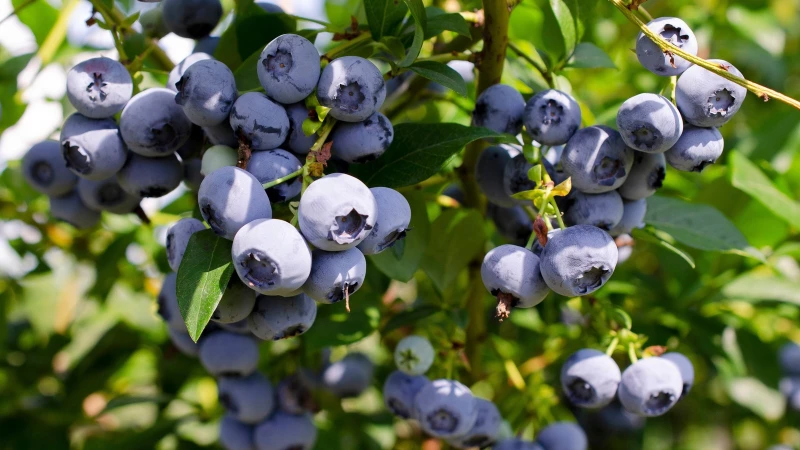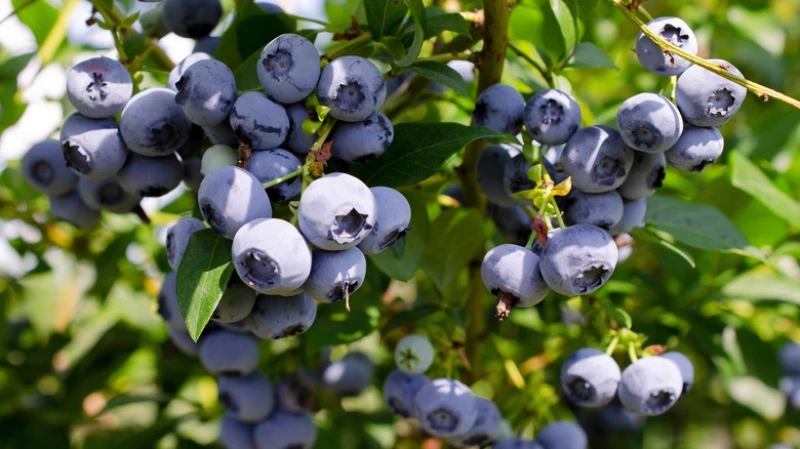Mastering the Art of Growing Blueberry Bushes
Indulging in the lusciousness of homegrown blueberries is a pure delight. With their enchanting bell-shaped white flowers and leaves that change color, blueberry bushes have become a must-have in gardens. However, growing these stunning plants can be quite challenging due to their specific growing requirements. They demand full sun, mild summers, winter chills without frost, proper irrigation, and dislike clay soils. The journey to enjoying these superfoods can be long and filled with mistakes. But the biggest mistake that most people make when growing blueberry bushes is neglecting the soil's characteristics.
Blueberry bushes thrive in well-draining, acidic soils. Straying from their ideal pH range of 4.5 to 5.5 can result in discolored and pale foliage, as well as slow-growing and small fruits. While choosing the hardiest variety for your USDA zone may seem like a solution, it's not enough. The problem lies in the fact that blueberry bushes produce better fruits through cross-pollination, and some cultivars are not self-fertilizing, requiring assistance. Neglecting to provide these prolific berry producers with sufficient sunlight and water, especially during the fertilization period, is another common mistake.
Sitting shallow in the soil and lacking root hairs for resource uptake makes these indigo fruit bearers extremely susceptible to soil and water variations. The way out is to ensure the soil matches the plant's acidity and organic matter needs. Blueberry bushes seek acidic soils with a pH not exceeding 5.5. This means you should be on a constant lookout to take care of blueberry bushes, especially around concrete surfaces prone to lime leaching. For soils hovering between a pH of 5.5 and 6.0, elemental sulfur amendment around 6 to 8 inches deep works before the fall planting, but you should supplement with iron sulfate for more basic soils. However, don't go overboard, as highly acidic soils (under a pH of 4.5) can raise aluminum and manganese concentrations that are toxic to the ornamentals.
Amending the soil with compost is essential as blueberry plants require at least ⅓ of the soil volume topped with organic matter, unlike the under-2% normally present in gardens. Ideally, the topsoil should be amended with cover crops a year before plantation to improve the organic content, but if that's not possible, applying peat moss and (non-lime-containing) sand in a 1:1 ratio to every planting hole should suffice. Follow up with slightly decomposed, acidic mulches such as wood chips, pine bark, sawdust, and ground yard waste. Repeat the soil test every year or two for targeted treatments.
Avoiding other planting mistakes
With site selection sorted out, another mistake that gardeners often make is planting the same variety, mostly chosen based on its fruit size, taste, cold-hardiness, and productivity. A better method is to plant several varieties, preferably with successive blooming periods (with some overlap), to promote cross-fertilization, as this yields more and better fruit. Moreover, while most blueberry cultivars are self-compatible, some, like Spartan, Polaris, Legacy, Brigitta, and Aurora, aren't. So, you'll need to space two different varieties around 5 feet away to promote pollinator action.
If you're a gardener, you may face challenges when it comes to growing woody shrubs. One common issue is sun exposure. While these shrubs can tolerate some shade, the fruits may not taste as sweet if they don't receive enough direct light. To ensure optimal fruit quality, make sure the shrubs receive at least six hours of direct sunlight each day. This will also help in preventing diseases.
Another aspect to consider is irrigation. Young shrubs, which are under three years old, need to be watered with 1.5 to 3 inches of water per week. It's best to use drip sprinklers for this purpose. On the other hand, mature shrubs require less water as they dislike having wet roots.
Lastly, it's important to deadhead at least 20% of the old growth. If you don't remove the old growth, the shrubs will spend energy maintaining it instead of producing larger fruits.









